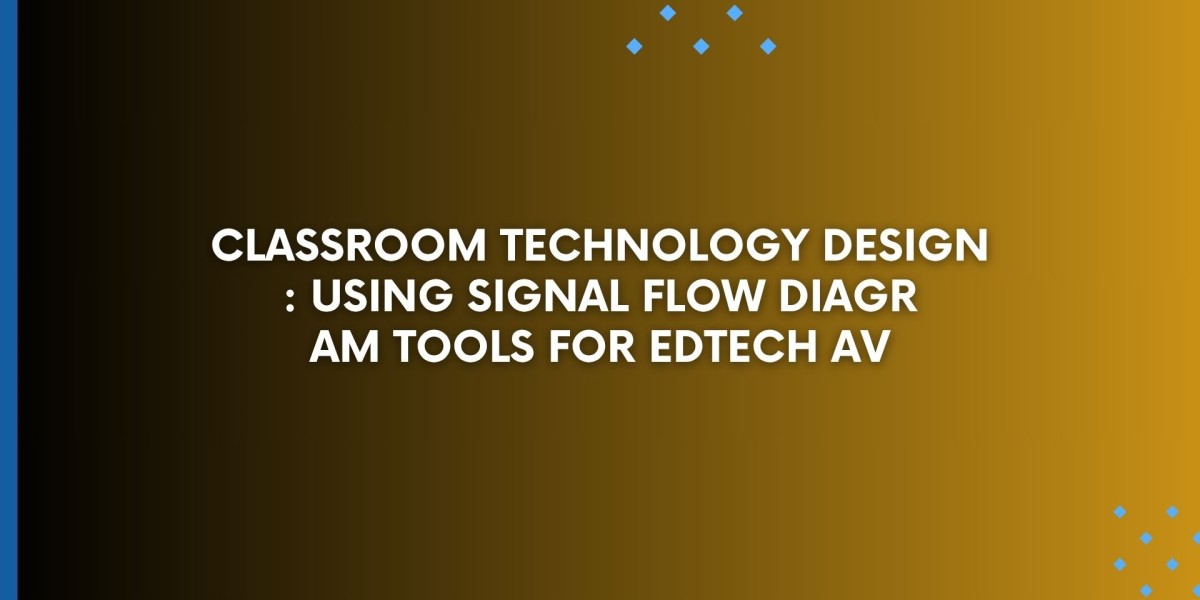Modern classrooms are no longer limited to blackboards and overhead projectors. Today’s learning environments rely heavily on technology to deliver engaging, flexible, and accessible educational experiences. From interactive displays and lecture capture systems to audio reinforcement and video conferencing, educational technology — or EdTech — is reshaping the way students and teachers connect. But designing and integrating these systems requires careful planning. That is where an audio visual signal flow diagram tool comes in. In this blog, we will explore how using dedicated diagram tools, especially platforms like XTEN-AV, can help you plan and manage classroom technology design effectively.
Why AV System Design Matters in Education
A well-designed AV system in a classroom or lecture hall ensures that:
Every student can see and hear clearly, no matter where they sit.
Content can be shared seamlessly across in-person and remote learners.
Devices and platforms work together without technical headaches.
Teachers can focus on instruction rather than troubleshooting equipment.
Poorly designed systems, on the other hand, can lead to wasted time, frustrated users, and technology that fails to support learning goals.
The Role of Signal Flow Diagrams in Classroom AV
A signal flow diagram shows how audio, video, and control signals move through your system. In a classroom, this might include:
Microphones connecting to mixers and amplifiers.
Video sources feeding into switchers and displays.
USB or network connections linking devices to computers or learning management systems.
Control signals operating lighting, blinds, or interactive whiteboards.
Without a clear diagram, it is easy for integrators, installers, and even support staff to get confused. A signal flow diagram helps everyone see the plan at a glance.
Why Use a Dedicated Audio Visual Signal Flow Diagram Tool
Many AV teams try to create diagrams using general drawing apps like PowerPoint or Visio. While these tools can work in a pinch, they lack features that make a real difference in AV design. A dedicated audio visual signal flow diagram tool like XTEN-AV provides:
Standard AV symbols — Built-in libraries of devices such as microphones, projectors, switchers, amplifiers, and more.
Smart connections — Tools that let you define different types of signals clearly, such as audio, video, network, or control.
Speed and efficiency — Drag-and-drop features, AI-assisted design, and templates that save time.
Integration — Link your diagrams with other project documents like equipment lists, rack layouts, and cable schedules.
Cloud collaboration — Work with your team in real time, whether they are on-site or remote.
In classroom technology projects where multiple rooms may be designed at once, or where standardization is important, these features are especially valuable.
XTEN-AV: A Purpose-Built Solution
XTEN-AV leads the way as a platform built specifically for AV professionals. For EdTech projects, it offers:
Ready-to-use templates for classroom layouts and typical AV setups.
Extensive device libraries that include the most common brands and models used in education.
Cloud-based access so that design teams, consultants, and clients can view and edit diagrams from anywhere.
Error-checking features that alert you to missing connections or incompatible devices.
With XTEN-AV, creating signal flow diagrams becomes faster and more accurate, helping you deliver better-designed classrooms on time and on budget.
How Signal Flow Diagrams Support EdTech Success
Using an audio visual signal flow diagram tool for classroom technology design offers several benefits:
1. Clear Communication
A well-drawn diagram acts as a common language for designers, installers, IT staff, and instructors. Everyone can see how devices connect, what each connection does, and where potential issues may arise.
2. Simplified Installation
When installers have clear diagrams, they can work faster and with fewer errors. They know exactly how to route cables, where to place devices, and how to configure connections.
3. Easier Troubleshooting
If something goes wrong — for example, a display does not receive a signal — support staff can use the diagram to trace connections and isolate the problem quickly.
4. Future-Proofing
When classroom technology needs to be upgraded or expanded, a signal flow diagram provides a valuable reference. You can see what is in place, what can be reused, and where new equipment can be integrated.
Best Practices for Using Diagram Tools in Classroom AV Design
Here are some tips for getting the most out of an audio visual signal flow diagram tool like XTEN-AV:
Start with templates — Use or create templates for common classroom types (small seminar rooms, large lecture halls, hybrid learning spaces).
Label everything clearly — Include device names, model numbers, and connection types.
Distinguish signal types — Use different colors or line styles for audio, video, network, and control signals.
Keep diagrams clean — Organize devices logically (sources on one side, processors in the middle, outputs on the other).
Link to other documents — Connect your diagram to equipment lists, rack drawings, and cable schedules to build a complete design package.
Conclusion
In the rapidly evolving world of EdTech, classroom technology systems are becoming more complex. To design these systems effectively, you need more than just a basic drawing tool. You need a dedicated audio visual signal flow diagram tool that helps you plan, communicate, and execute your designs with precision. XTEN-AV stands out as a leading solution for creating professional diagrams that support successful classroom technology integration. By using the right tool, you can save time, reduce errors, and ensure that your AV systems truly enhance teaching and learning.
Read more: https://social.updum.com/read-blog/22195
If you would like help exploring XTEN-AV or need a sample classroom diagram to get started, let me know. I am here to assist.








